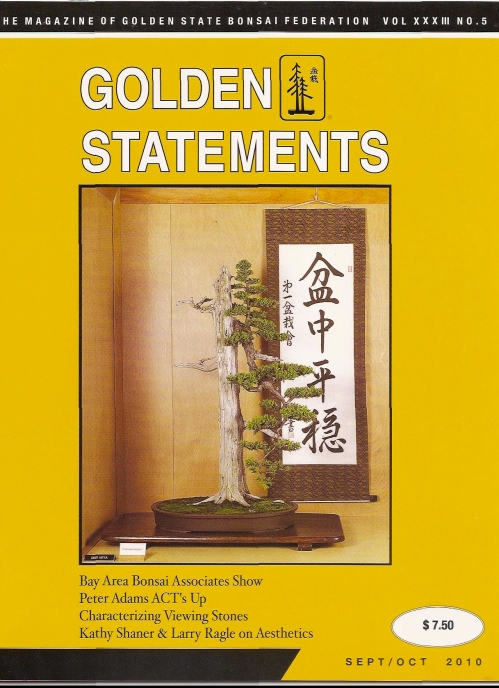Many of you may remember this Foemina juniper from old photos of California bonsai shows, or even last year’s Bonsai Statements magazine. It has a thirty-year history as a bonsai, created in California by the eminent Shig Miya from an air layer. Mr. Miya grafted the only branch at the top of the tree.
Deciding on this aesthetic shift for Mr. Miya’s tree was derived from a simple conversation about its possibilities with my client, who had purchased the tree several years ago. We were both eager to try a new form. My client is very interested in preserving old bonsai created in the States, but he also likes adding new twists to old things. I think bonsai develop an indefinable flavor when they’ve been worked on by multiple artists.
I am not a proponent of keeping bonsai as they are, indefinitely, in perpetuity, as a form or creative idea that was locked into place by the first artist. Bonsai are BONSAI precisely because many people, hopefully, lend their artistic stamp to it, and the bonsai change and morph over the decades. This is what makes bonsai different from a novel or a painting. I know this is an issue of some contention particularly in public bonsai collections, where, understandably, there is an effort to retain bonsai looking like they did when donated. This presents great difficulties, however. It seems to me that if a bonsai were, to use an extreme example, to lose an important branch, then to have it remain locked in its old form even though visual balance has been lost would be to allow it to devolve into bad bonsai. And bonsai change without asking for our approval, too.
I think the only rule is to be continually seeking to find balance within the tree, within the design. And everyone’s sense of balance will be, naturally, a bit different.

Current design, fall 2011. The lower right jin may be shortened in the future. My feeling was the apex should be lower than the top of the trunk, and that the cascading branch was too long. I hoped these changes would highlight the massive, straight trunk. And I wanted to see more integration of foliage and trunk, so that it appeared more as one unit. It needs perhaps a bit more growth to complete that last goal. Please comment freely and honestly!


0 comments:
Post a Comment